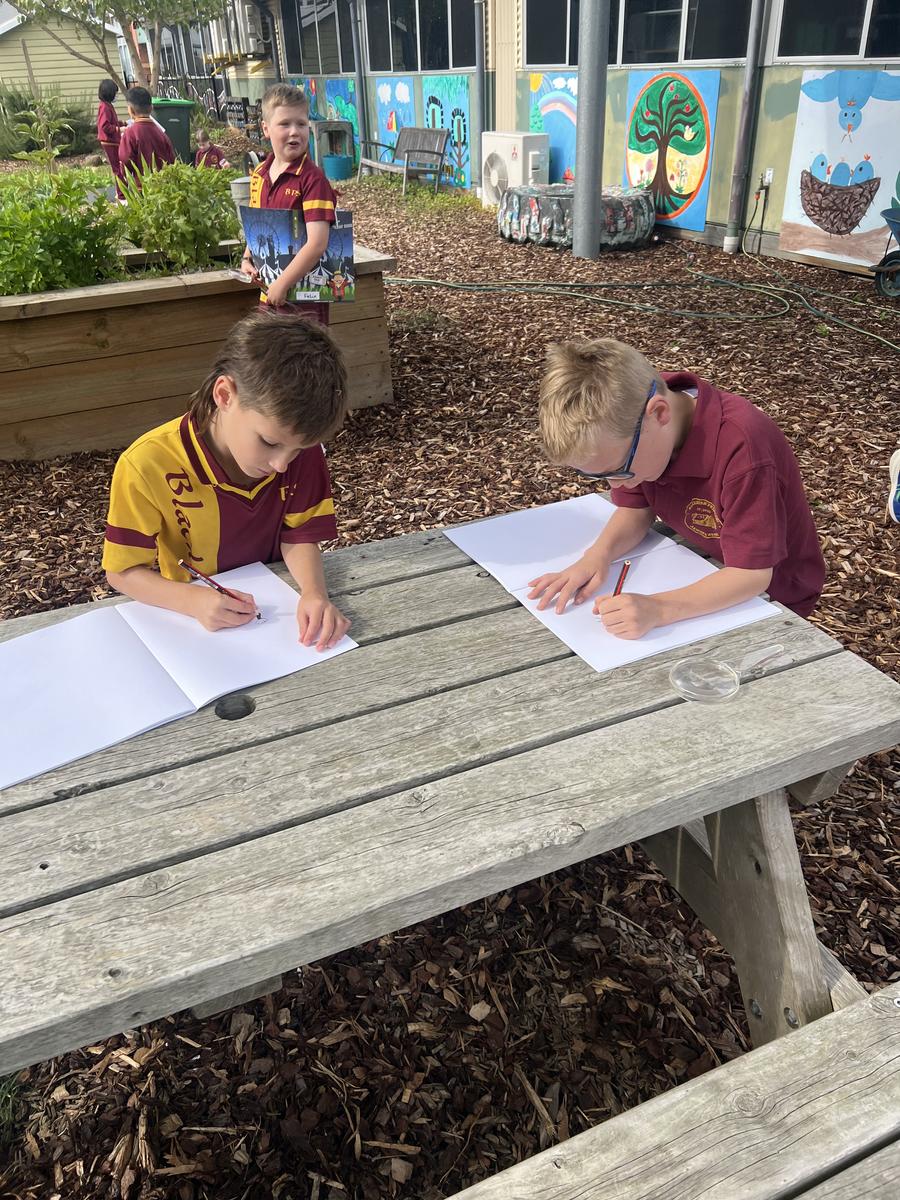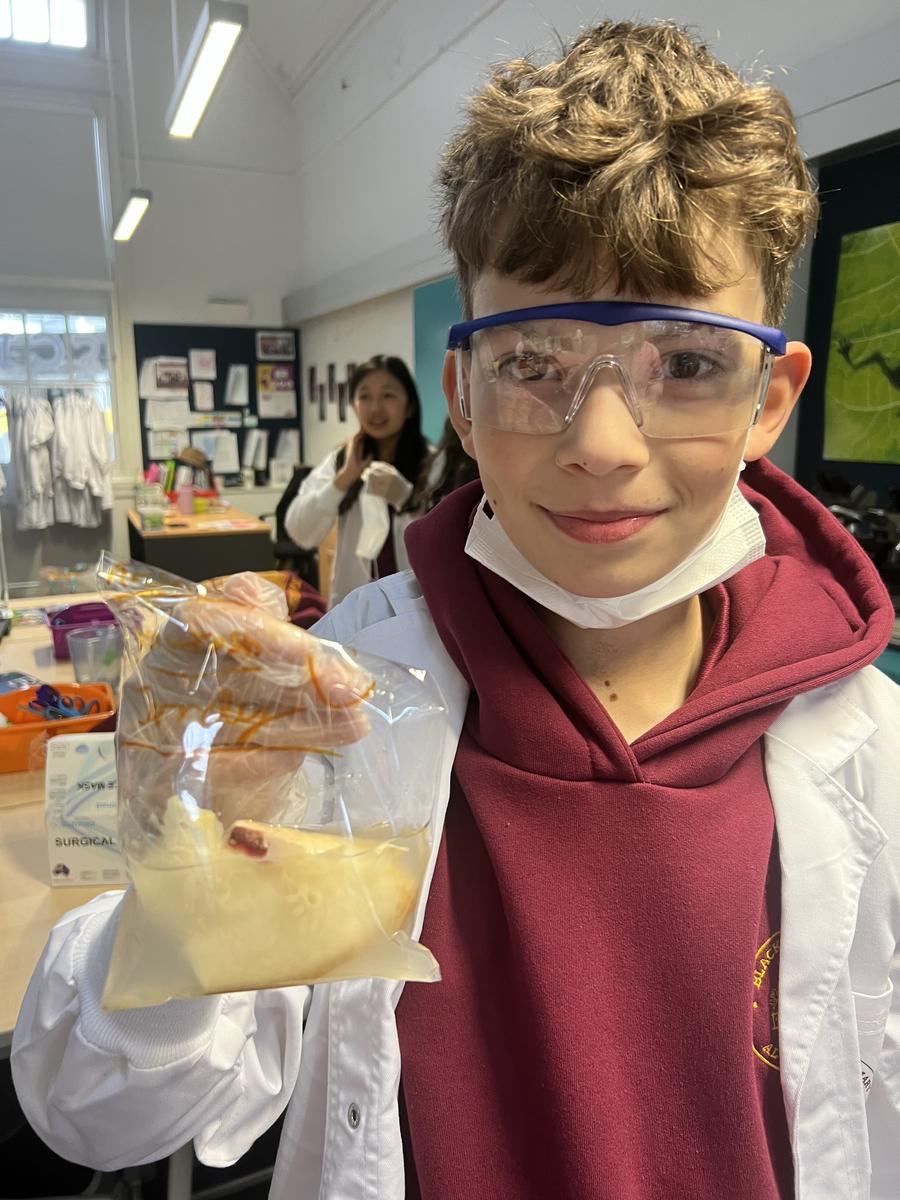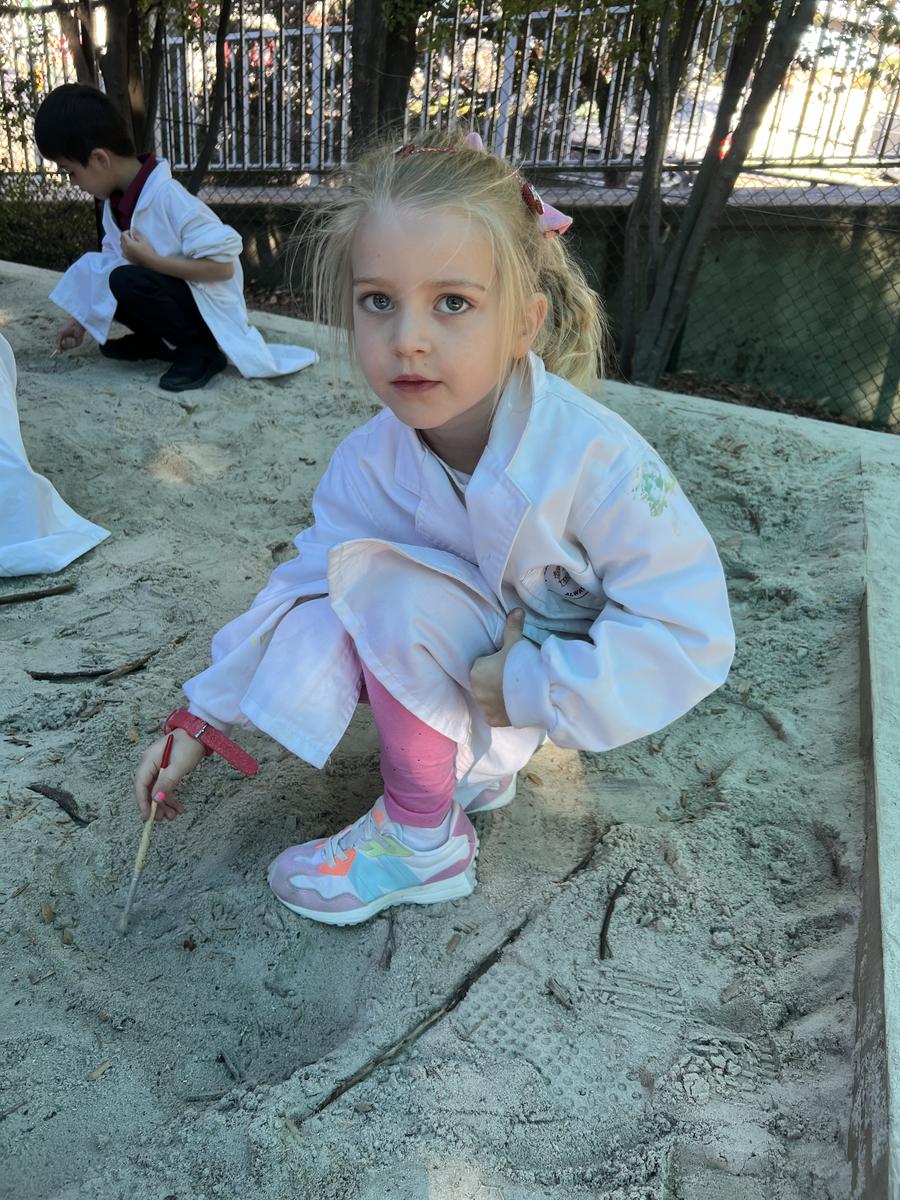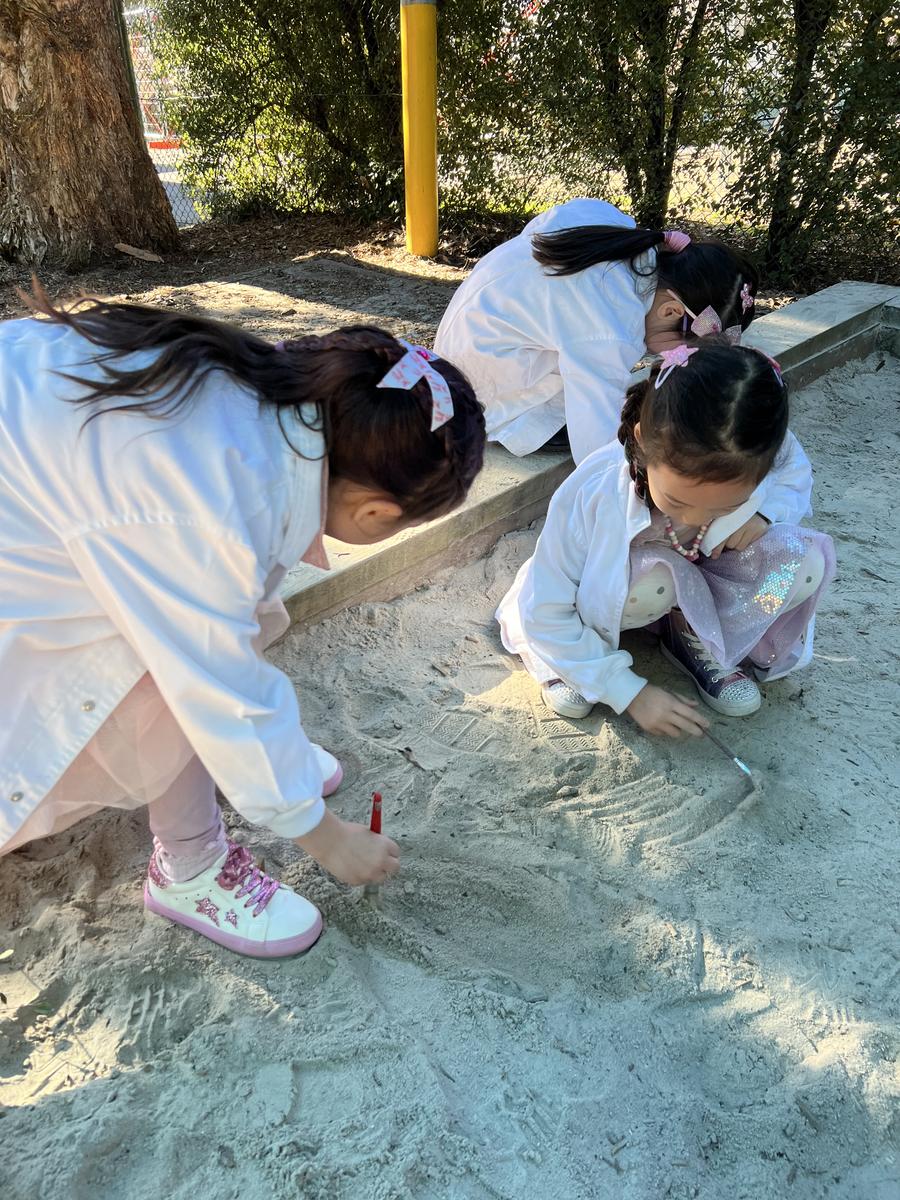Science at BPS

Term 2 has been a very busy term in Science! We have had a Biology focus and it has been so wonderful to see all the amazing things our students have learnt. We have been Botanists, Microbiologists, Entomologists, Zoologists, Mycologists and Paleontologists.
In Foundation we began the term learning about what plants need to grow. We conducted an experiment with alfalfa seeds, putting some seeds in the dark with water, some in the light with no water, and some in the light with water, to see which would grow best. It turns out that the seeds in the dark grew best! With our newly discovered knowledge, our Foundation students then planted snow pea seeds and we kept them in the dark until they sprouted. We discovered that once plants had sprouted they needed sunlight to keep growing so we moved them into the sunny classroom where they continued to grow! Later in the term we became Entomologists, learning about butterfly features and needs. We created butterfly feeders to attract more butterflies to our gardens, learning that butterflies are attracted to sweet things! For the last few weeks of term we have been Paleontologists, completing a dinosaur fossil dig in the Foundation playground sandpit, learning about what dinosaurs liked to eat and sorting out different features of dinosaurs, such as horns, spines, plates, beaks and claws.
Year 1 and 2 students have been equally as busy! We began the term by heading out to the Patch to see what we could discover about plants. We found out that there are a lot of different types of plants, but we could notice many similarities between them all. Next up we learnt about a plant's life cycle. We began an experiment to grow our own seeds, 'planting' chickpeas on some paper towel and keeping them in the dark. Sadly our experiment didn't work out as well as we had hoped, which was an excellent learning experience in itself because experiments don't always turn out the way we expect them to. We were able to see the features of a plant though, such as leaves, roots, stems, and flowers, even though we couldn't take our chickpeas home. We became Entomologists as well, as looked at the difference features of a butterfly, noting that he actually has 4 wings and 3 parts to it's body! We looked at and noted differences between life cycles of different animals, such as butterflies, crocodiles and dinosaurs! Moving into our dinosaur unit has been exciting because we were able to identify different dinosaurs and discover just how big they are! Did you know that we can fit between 22 and 25 grade 1 and 2 footprints inside a single triceratops footprint! Wow!! We spent some time discussing different features of dinosaurs and how Paleontologists are able to identify dinosaurs by their fossils.
Years 3 and 4 students spent the first part of the term learning about Biologists, focusing on the life cycle and features of a plant. We planted broad bean seeds and made some predictions about where they would grow best. We decided to leave our seeds in the sunlight. Students made observations each week and continued to add to their plant life cycle. Our broad beans were generally very successful and students were able to take them home and it has been great to hear how well they are doing! While learning about the life cycle and features of plants, we investigated photosynthesis and discuss it's importance for both plants and other life. Our 3 and 4 students were also able to use our microscopes this term, looking at tiny pieces of different plants. We were also able to use our microscopes to look at root hairs and leaf veins on some mint plants from the Patch. Later on in the term we became Zoologists and Paleontologists. We learnt about producers, consumers and decomposers; life cycles of different animals; and key features that help with survival. We ended the term by creating our own dinosaurs, ensuring we had identified features to make sure our dinosaurs could survive and thrive.
In Year 5 and 6 students have had a very exciting term! We began by discussing natural selection and how living things survive in their environments. We learnt about extremophiles, tiny organisms that can survive in extreme environments, and we started to investigate how we can create mould. Students were given a slice of bread and had to decide the best environment for mould to grow in. Some students chose darkness, some chose light, some chose heat, some chose to spray a small amount of water on their bread and some chose to submerge their bread! We had many successful experiments with lots of different types and colours of mould growing, and a lot of very happy and disgusted students! Once our mould was disposed of, we began our next experiment - thinking about what environment a plant would grow best in. We discussed variables in experiments and how we only change one for it to be a fair test. Students worked in groups to plant seeds in potting mix and then chose what to plant their other seeds in - sand, tanbark, dirt from outside... They then decided whether they wanted to keep it in the light or the dark. All students successfully grew plants, even in very dense sand! We were quite surprised how well these plants grew. Students were able to complete an analysis of their experiment, thinking about why they were or were not successful and what they might have changed had they done the experiments again. Later in the term, Years 5 and 6 students have been looking at dinosaurs, focusing on their names and features. Did you know that dinosaur means terrible lizard?! Students have culminated their knowledge into a 'Designosaurus' project. We are all very excited to be designing our own dinosaurs, annotating their features and thinking about their names based on what they look like and how they act. We can't wait to share our new dinosaurs on Science Day!
I am very excited for our inaugural Science Day on the 26th of June. We will have a performance from Mad About Science, who will be sharing some chemistry experiments with us in preparation for next terms units. Students will also be completing dinosaur themed activities throughout the day.
Next term, all year levels will be completing a Chemistry unit, which I am sure will be met with a lot of interest and excitement!
Why are chemists great at solving problems?
They have all the solutions!
Wendy Bennett
Science Teacher


























